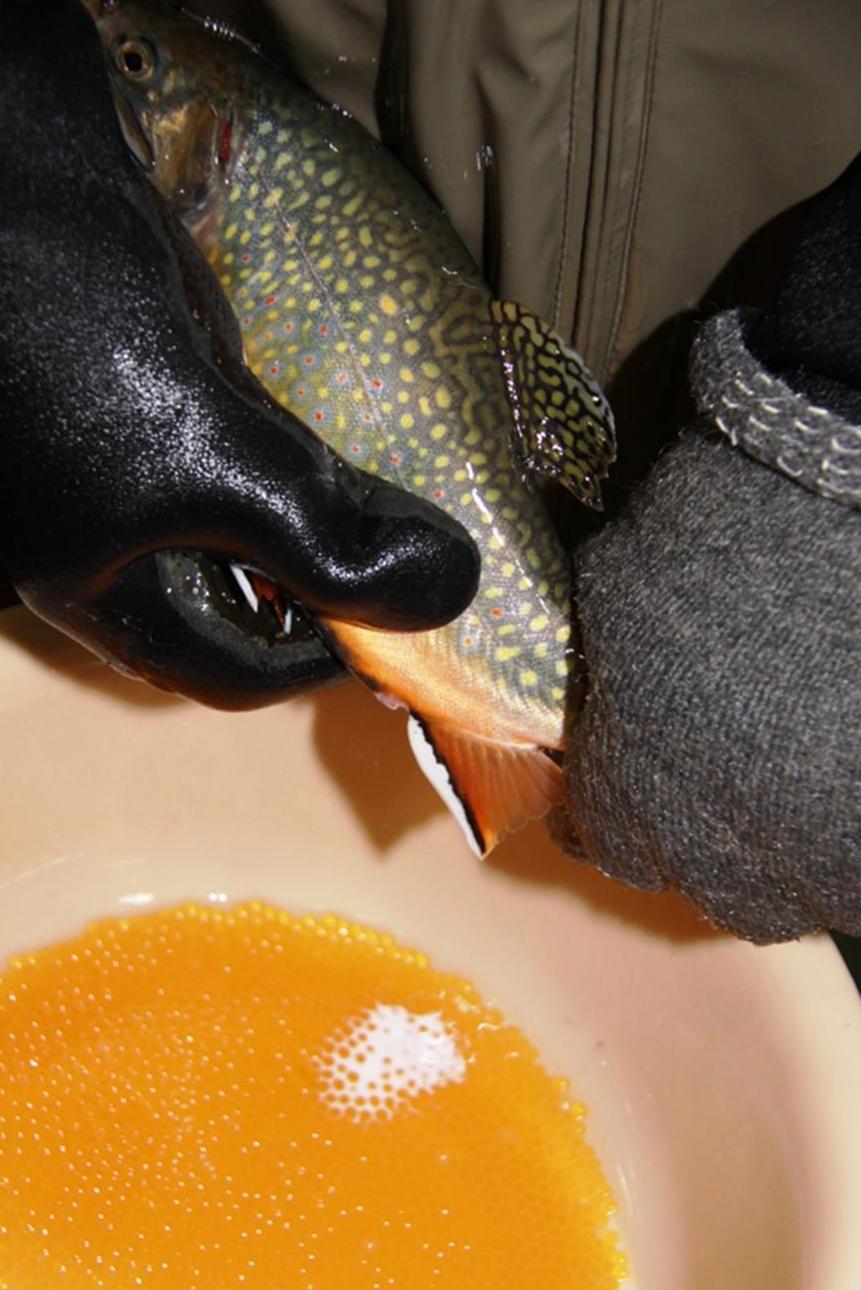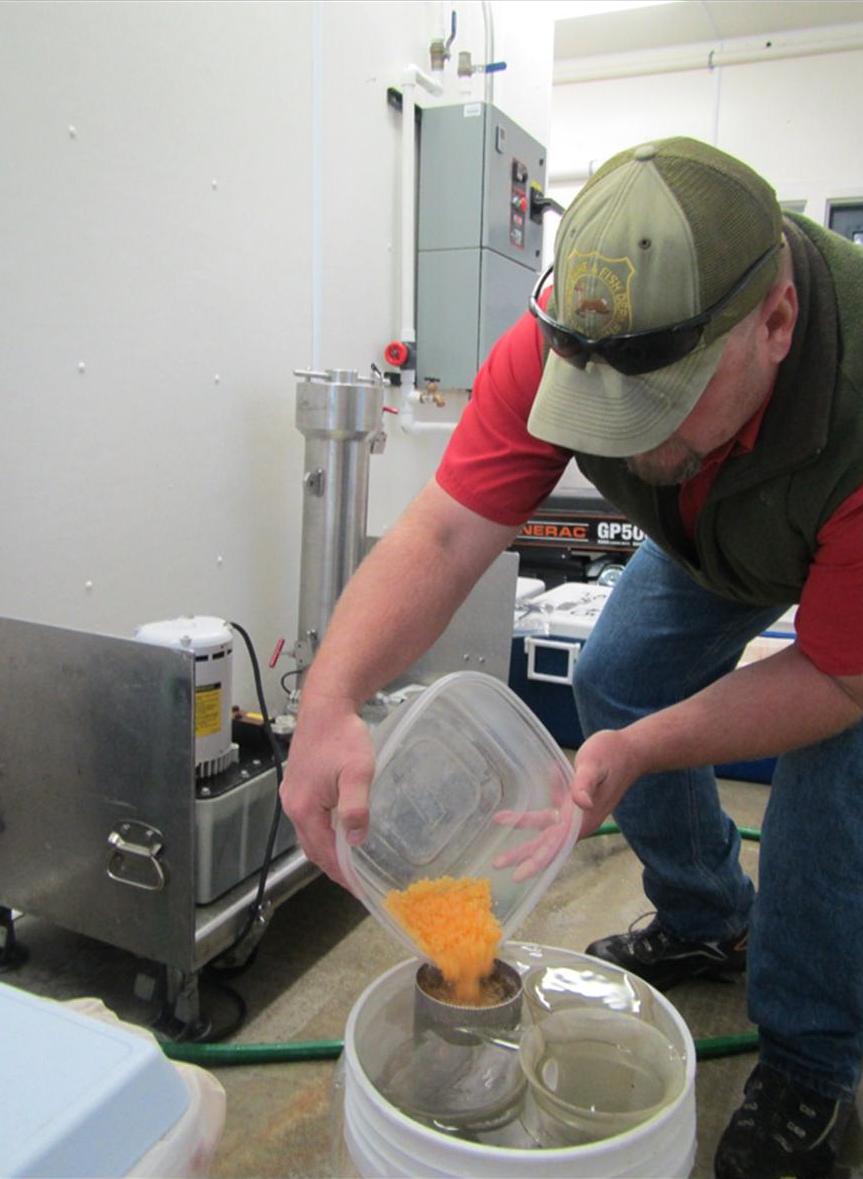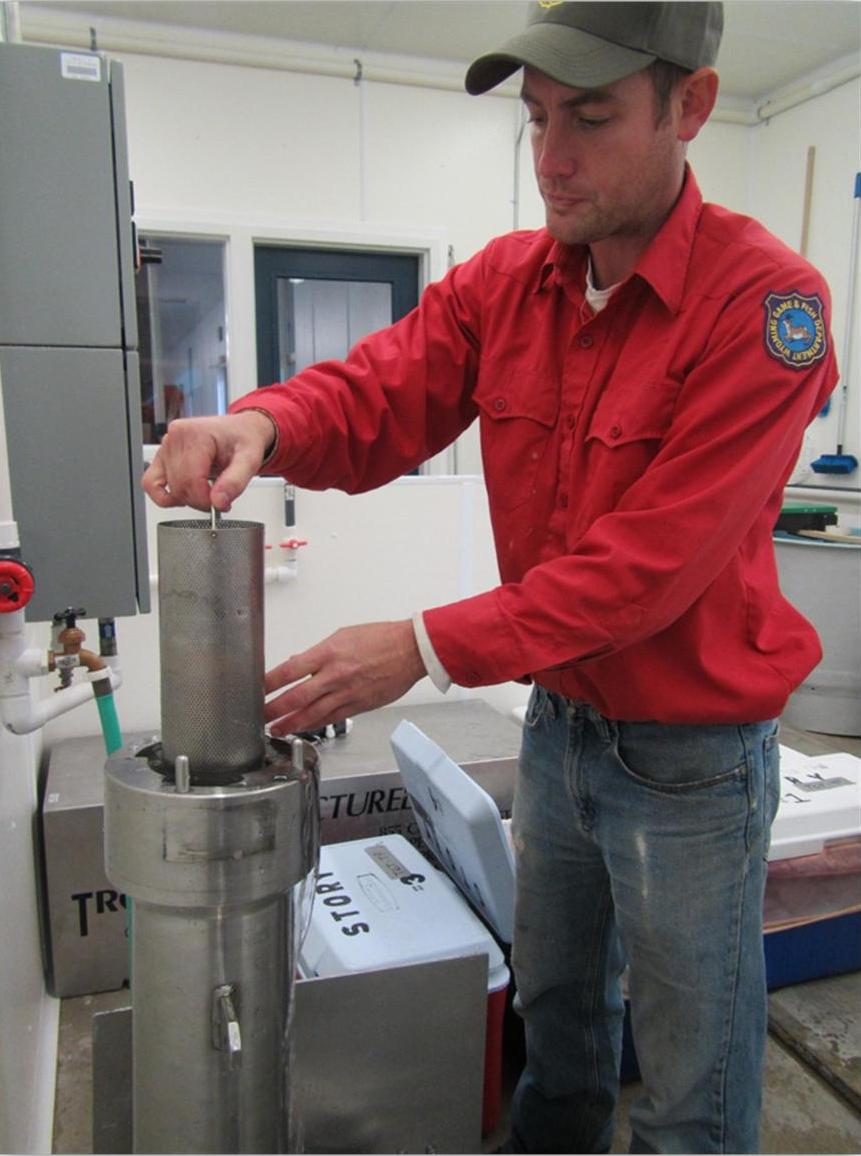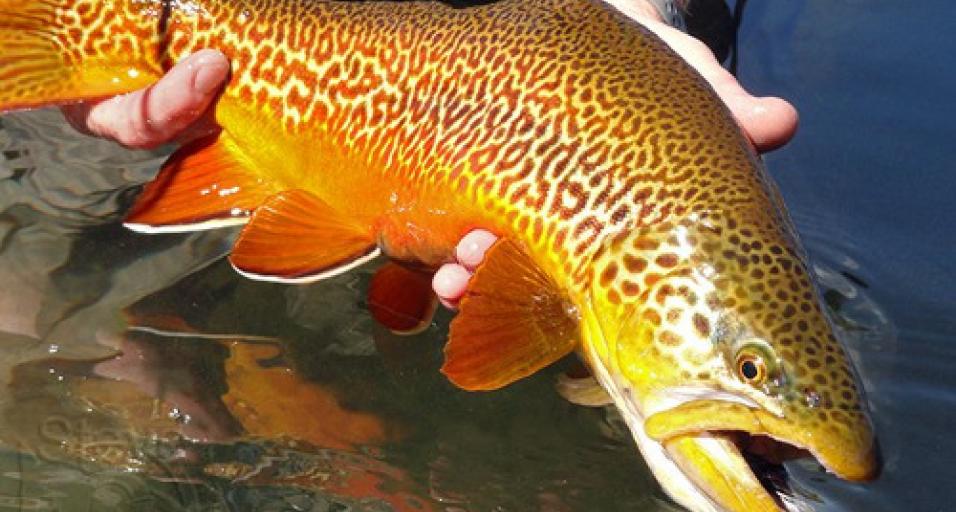How to make a tiger trout
Game and Fish began stocking tiger trout in Wyoming in 2005. Over the next six years, using tiger trout sourced from Utah, just over 92,000 were stocked in a half dozen Wyoming waters.
The tiger trout is a sterile hybrid created by crossing a female brown trout with a male brook trout. The result is a unique fish that has created new opportunity and much excitement for Wyoming anglers.

Starting in 2011, eggs were collected at Story Hatchery to create tiger trout for stocking in 2012. It was not an immediate success. Only 32 percent of the 80,000 eggs collected became ‘eyed’. The eyed stage occurs 30 to 60 days after fertilization when the eyes of the fish become visible in the embryo. However, in recent years, hatchery personnel have adjusted the spawning procedure and almost tripled their success rate by using a procedure called triploidy.
In a typical male-female pairing, two chromosomes from the egg and one from the spermatozoon are combined. Only one of the female chromosomes will ultimately remain in the fertilized egg, with the other being ‘kicked out’ and degenerating 40 to 45 minutes after fertilization. The egg will then have just two chromosomes remaining, one from the male and one from the female. This is a diploid egg.
However, by applying very high pressure to the egg during the five minute span when the third chromosome is expelled from the egg, hatchery personnel can force the chromosome to be retained, creating a triploid egg.
Triploid eggs have three sets of chromosomes but are not genetically-modified organisms. The genes of the fish have not been manipulated or modified in any way. They simply have an extra copy of DNA that makes reproduction impossible.
The procedure is complicated, requiring several trained personnel and exact timing, down to the second, to ensure that the procedure is a success. After eggs from the female and milt from the male are mixed to begin fertilization, they are left to develop for 40 minutes. At exactly 40 minutes post-fertilization, the eggs are placed into a pressure chamber and subjected to 9,500 psi of pressure for five minutes, forcing the third chromosome to remain in the egg.


Hatchery personnel are unsure why creating triploid tiger trout eggs increases their survival rates, but experiments have shown that 72 percent of triploid tiger trout eggs survive to the age they begin feeding, compared to just 54 percent of diploid eggs. Story Hatchery’s percentage of eggs that reach the eyed stage is now 87 percent.
Story Hatchery now creates hundreds of thousands of tiger trout eggs each year, most recently 441,102 in 2018. Since the program began in 2011, 46 Wyoming waters have been stocked with tiger trout and eight other states have received Story tiger trout eggs.
In the Sheridan Region, tiger trout have been stocked at Willow Park, Cloud Peak, Weston and Muddy Guard reservoirs #1 and 2.
The tiger trout is a sterile hybrid created by crossing a female brown trout with a male brook trout. The result is a unique fish that has created new opportunity and much excitement for Wyoming anglers.

Starting in 2011, eggs were collected at Story Hatchery to create tiger trout for stocking in 2012. It was not an immediate success. Only 32 percent of the 80,000 eggs collected became ‘eyed’. The eyed stage occurs 30 to 60 days after fertilization when the eyes of the fish become visible in the embryo. However, in recent years, hatchery personnel have adjusted the spawning procedure and almost tripled their success rate by using a procedure called triploidy.
In a typical male-female pairing, two chromosomes from the egg and one from the spermatozoon are combined. Only one of the female chromosomes will ultimately remain in the fertilized egg, with the other being ‘kicked out’ and degenerating 40 to 45 minutes after fertilization. The egg will then have just two chromosomes remaining, one from the male and one from the female. This is a diploid egg.
However, by applying very high pressure to the egg during the five minute span when the third chromosome is expelled from the egg, hatchery personnel can force the chromosome to be retained, creating a triploid egg.
Triploid eggs have three sets of chromosomes but are not genetically-modified organisms. The genes of the fish have not been manipulated or modified in any way. They simply have an extra copy of DNA that makes reproduction impossible.
The procedure is complicated, requiring several trained personnel and exact timing, down to the second, to ensure that the procedure is a success. After eggs from the female and milt from the male are mixed to begin fertilization, they are left to develop for 40 minutes. At exactly 40 minutes post-fertilization, the eggs are placed into a pressure chamber and subjected to 9,500 psi of pressure for five minutes, forcing the third chromosome to remain in the egg.


Hatchery personnel are unsure why creating triploid tiger trout eggs increases their survival rates, but experiments have shown that 72 percent of triploid tiger trout eggs survive to the age they begin feeding, compared to just 54 percent of diploid eggs. Story Hatchery’s percentage of eggs that reach the eyed stage is now 87 percent.
Story Hatchery now creates hundreds of thousands of tiger trout eggs each year, most recently 441,102 in 2018. Since the program began in 2011, 46 Wyoming waters have been stocked with tiger trout and eight other states have received Story tiger trout eggs.
In the Sheridan Region, tiger trout have been stocked at Willow Park, Cloud Peak, Weston and Muddy Guard reservoirs #1 and 2.
3076727418

